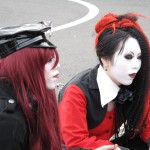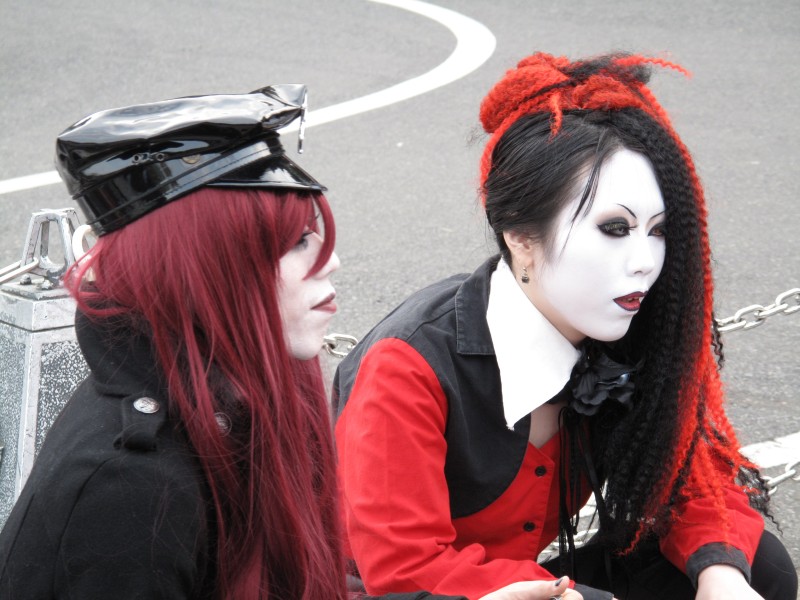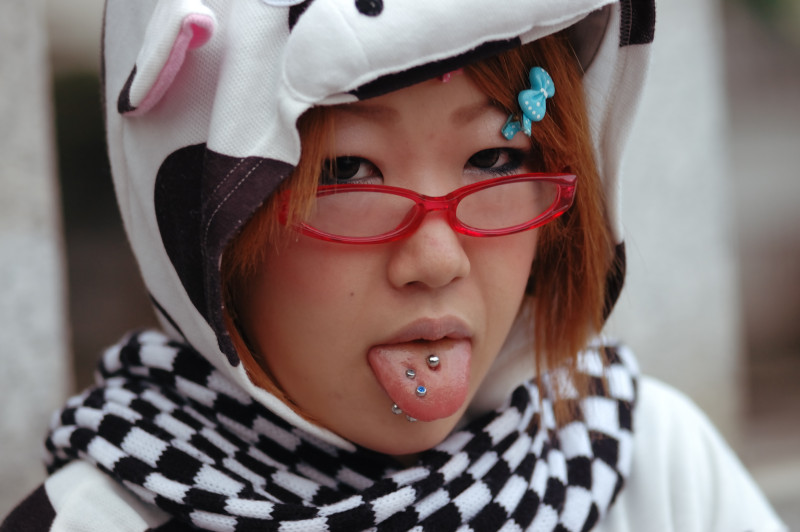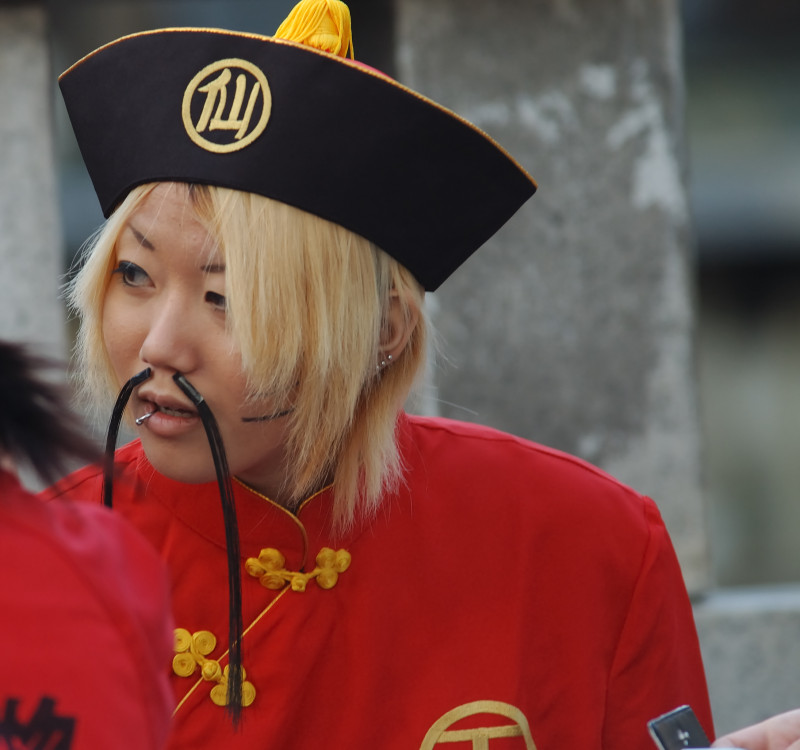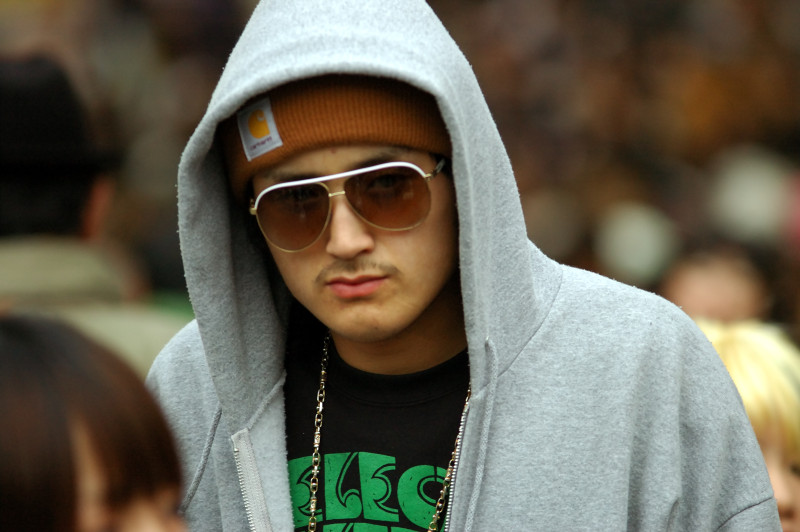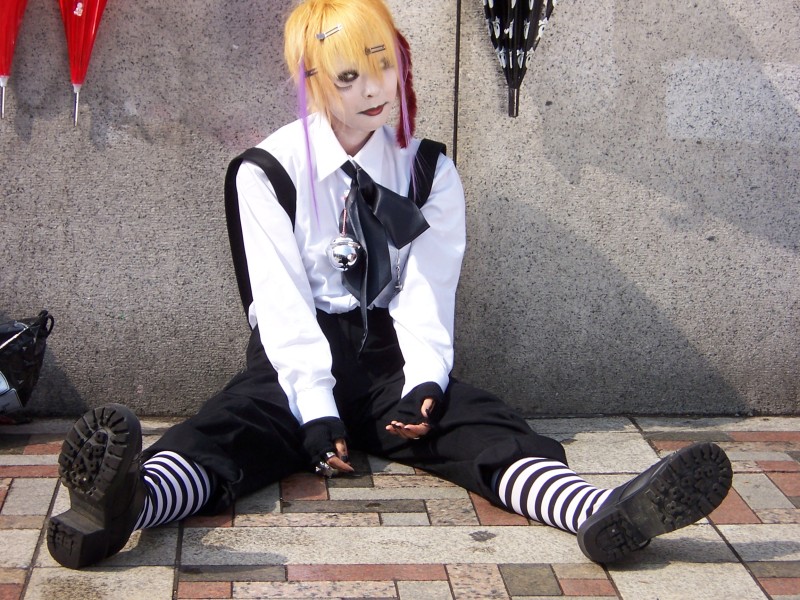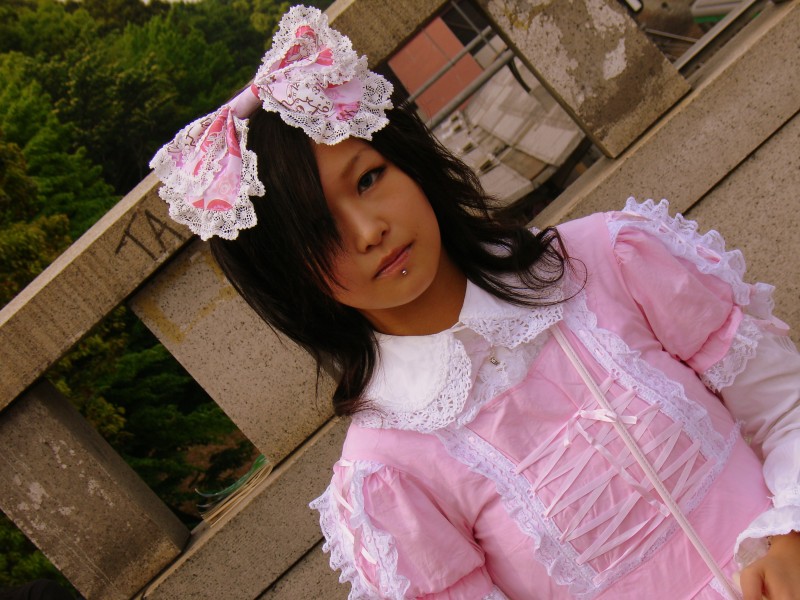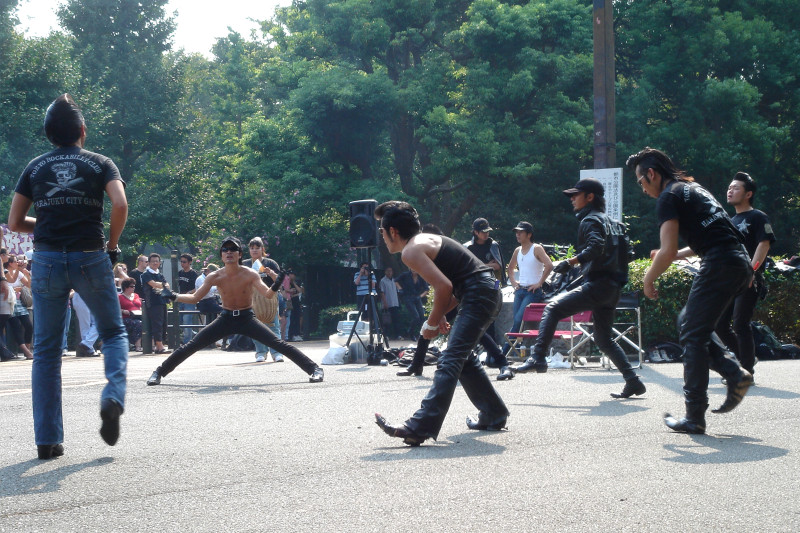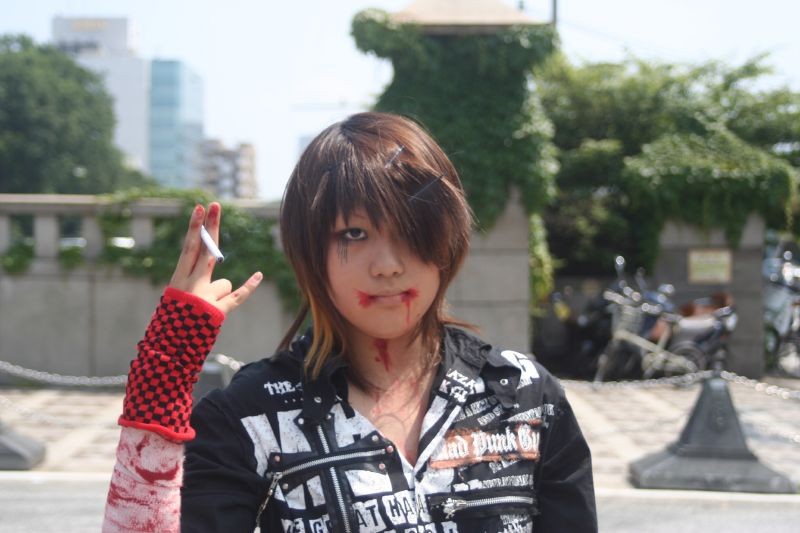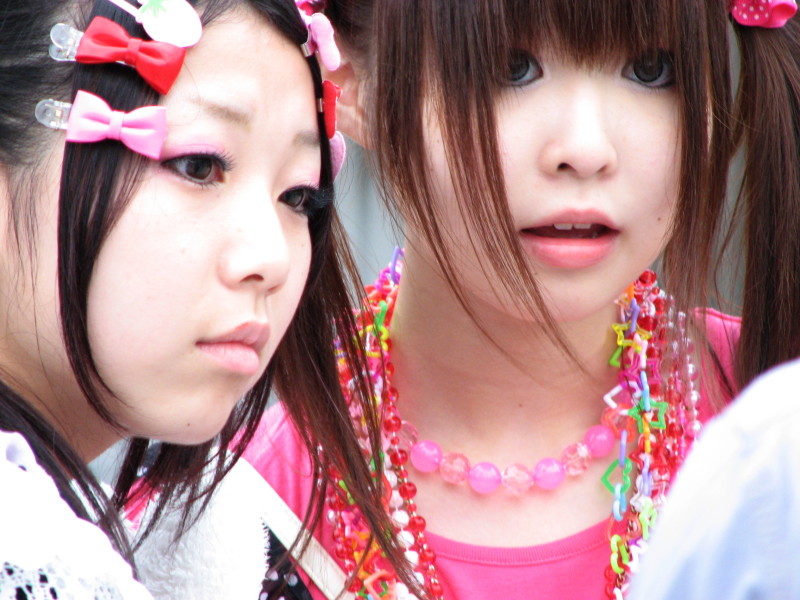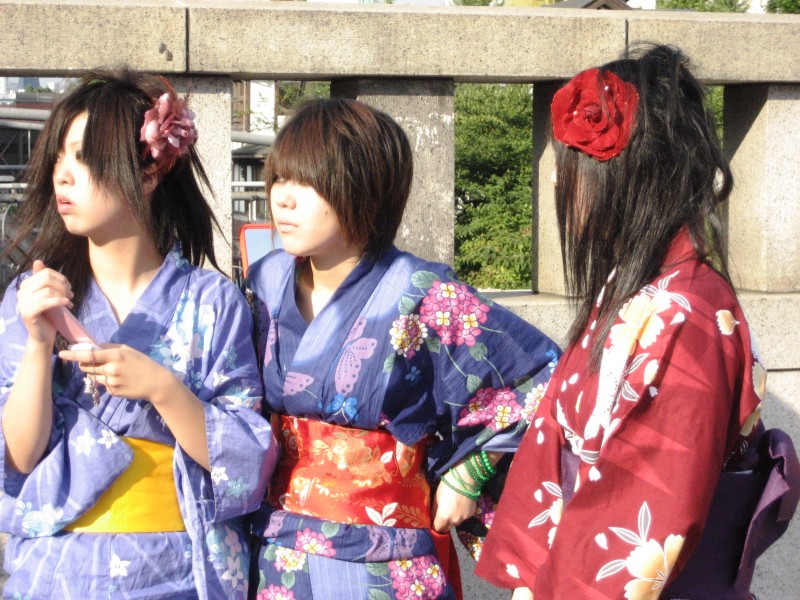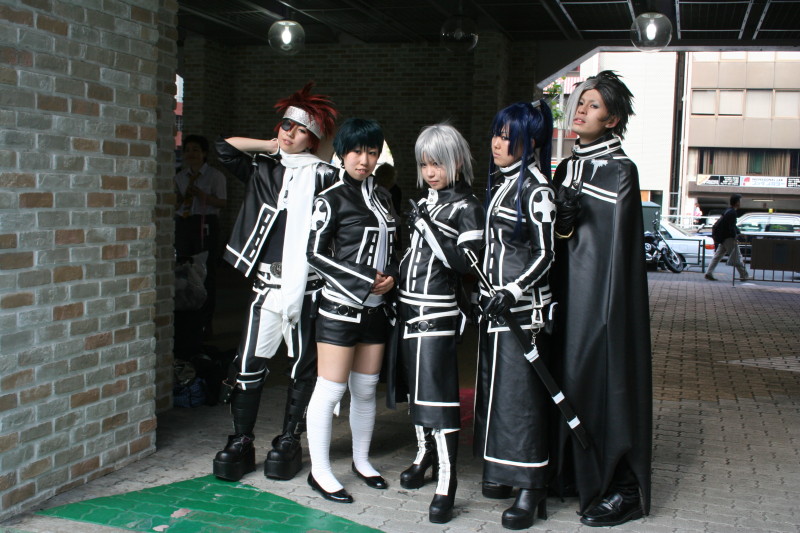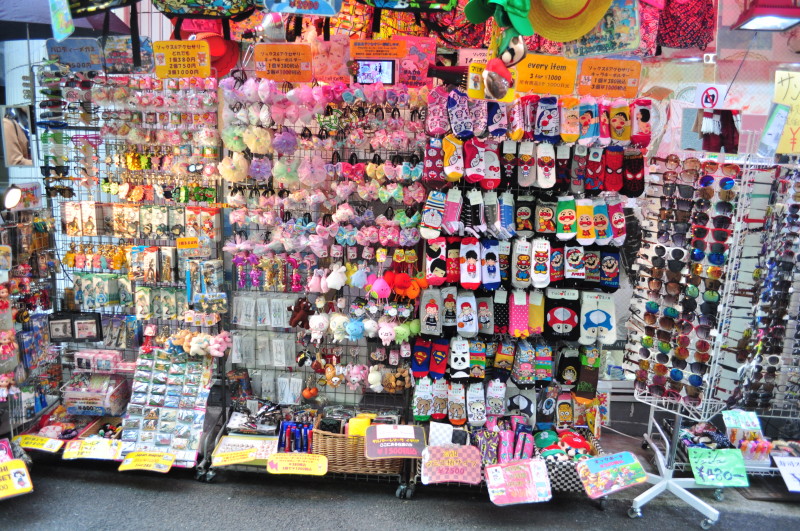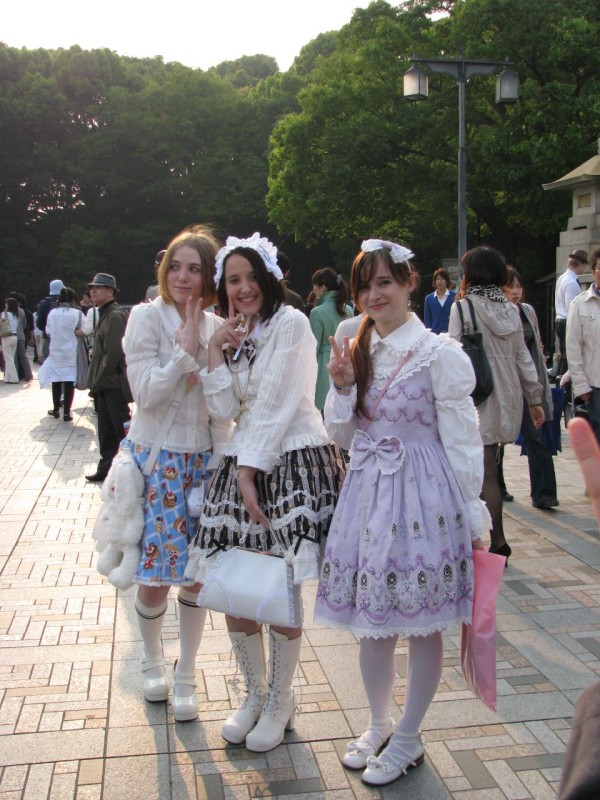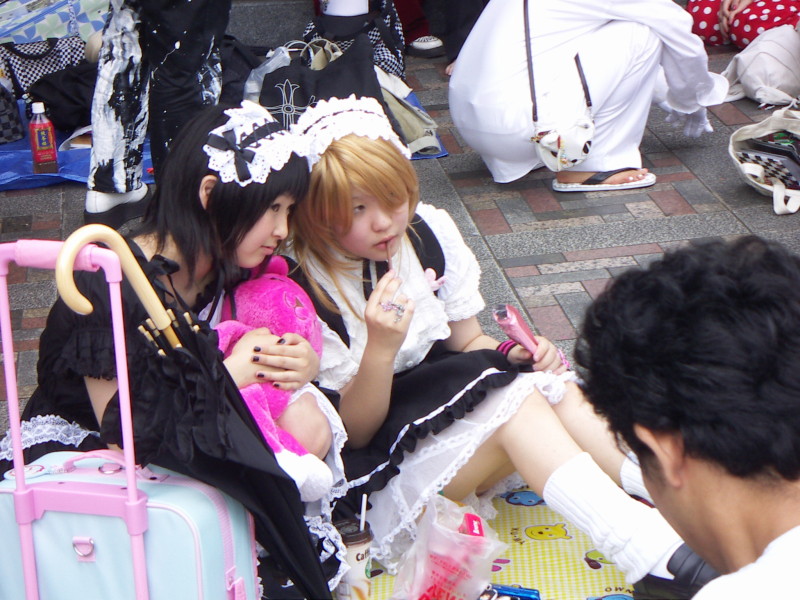Harajuku is a place where a worldwide fashion movement has been born from and its powerful style and message is now been carried all around the world through fashion, music, and artwork. If you haven’t noticed it in your city, on social media sites, or on TV, then let me introduce you here to one of Japan most iconic visual styles!
Harajuku style is impossible to ignore, especially when you walk anywhere in Tokyo. It is the product of many generation of young kids who developed this style,reinvented and refined it again and again, and it is still changing and morphing in surprising and refreshing ways. If you plan to get to Tokyo and want to know the city artistic and fashionable aspects, then simply take the Yamanote Line train and get off at Harajuku Station, between Yoyogi and Shibuya stations and enjoy this vibrant culture in its ground zero spot, Takeshita Dori street!
So what it is all about? Lets go over 15 points that will hopefully get you familiarized with Harajuku Style and allow you to understand who is who and where is all the action happening!
1. What is Harajuku Fashion?
It’s hard to pinpoint what is Harajuku style exactly because it is so versatile and broad fashion statement which sometime makes it hard to constrain into a specific style but the best way to explain it is that Harajuku style is a mix & match of theatrical and extravagant fashions in a very sophisticated and artistic taste. At first, you might think the young generation on Harajuku streets has nothing in common, as you will almost never see the exact same clothing on anybody, but if you look closer and see the details of the customs and accessories, you will start notice that very colorful “mix & match” style of Harajuku and the tasteful beautify and elegance it is been worn on those wild kids. Different from rebellious movements around the world, those young rebels in Harajuku are not troubled or unhappy youth, they are fully content kids who gather in Harajuku to share their love to cloths wearing and creating while showing off their new creations to everyone around them.
2. How Harajuku Fashion Looks Like?
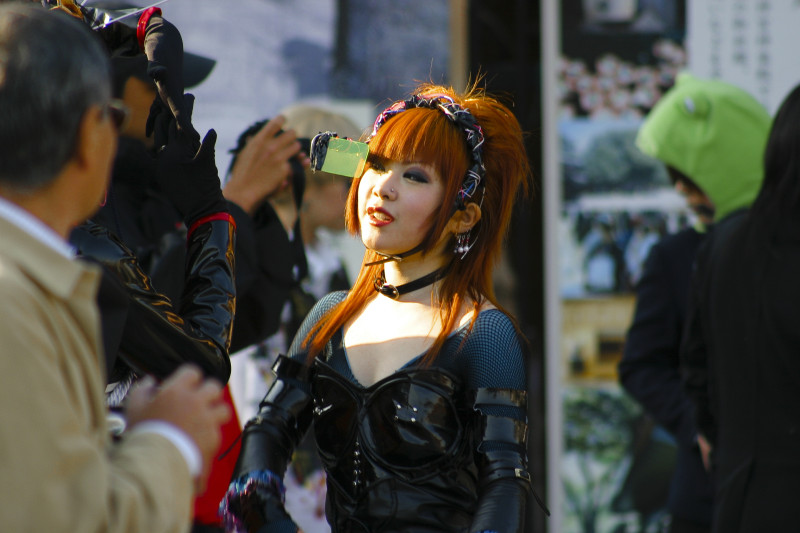
Source: Brian Jeffery Beggerly
Harajuk fashion is divided to many styles and sub-styles with new fashion and genre of clothing been born every weekend when the kids gather in their weekly Sunday hangout on Harajuku Bridge, right next to Harajuku Station exit and the entrance to Meiji-Jingo Shrine. The fashion is mostly very colorful and includes accessories, hair die, body piercing, fake tattoos, body paint, and extreme face and body makeup. The Harajuku kids (and adults who likes this style) are simply glowing with very vivid colors and accessories to look very unique. Each person which you will see in the streets has probably been working for hours on their outfits, accessories and makeup with meticulous details before they arrive to the scene and all are very happy to show off their creations, take photos, and be very social with each other and with strangers. If you feel like taking a photo, all you need to do is ask and anybody will gladly pose for you or even take photo with you!
3. What Kind of Styles Are There?
Harajuku style has branched off to numerous sub-styles where the basic “mix & match” colorful trend turn into more specific theme, such as punk-rock, gothic, lolita, rockabilly, cosplay, and probably the most famous of of all is the “Kawaii” style which was the first one to breach the Japanese only scene and turn to a global movement. Looking at all the styles around, you might get confused by the variety of sub-genres but make no mistake about it, it is well categorized among the Harajuku crowd and you will always see each sub-style gather together in mini-groups in different parts of Harajuku. Each sub-style has its own unique scene which includes special coffeeshops, cloths stores, and nightlife clubs. Most of those kids are also aware of how their fashion spread around the world and are entertained by foreigners taking on this style and showing up in Harajuku wearing their own outfits, so have no fear and get out to Harajuku in your very own style and find the group you are closely relate or look lie! They will be glad to have you join and and exchange appreciation for the style and movement!
4. Classic Harajuku Style
The classic Harajuku style is considered the most “cool” one, and the people who dress in this style are usually very individual and not gather in groups very much. This is the crowds that usually love in Harajuku or Shibuya area and are simply mixing all sort of hip-hop and club style clothing in daytime. You can see people wearing extra large sunglasses, hats, accessories, and shoes all mixed up in a bit of a misfit way. Those are the very original Harajuku style people who shop for their cloths both in Harajuku, Shibuya and Shinjuku and offer an interesting “cool” look which might look like almost “conservative” in comparison to the other styles around. Yet, even though it is not as wild as other Harajuku styles, the classic look is a very sophisticated and interesting one with most of the shops that cater this style are located beyond Takeshita Dori and closer to Omotesando backstreets area.
5. Harajuku Gothic Lolita Style
The Gothic Lolita Style in Harajuku is a direct decent from Akihabara maid cafe and more dark theatrical style you can mostly find in Akiba, which is another center for the cosplay community. This style is also taking a lot of inspiration from video games and anime movies in which the characters are playing role of all sort of Victorian era characters. The main difference of the Gothic Lolita style in Harajuku from the Akihabara one is that in Harajuku style is not constrain by the classic and perfect imitation of Victorian era clothing but instead it is a bit comic and “out of order” intentionally. Cloth can be ripped a bit, makeup can be a bit off center, and accessories might be worn in a bit of the wrong way to give the Gothic Lolita Harajuku looks more cute and less serious look.
6. Harajuku Cute Lolita Style
The Cute Lolita style is another variation of Akihabara maid cafe look and in fact, it is inspired by the “akiba” style with a little twist of harajauku which includes body piercing and very colorful dresses and hair pieces, sometime way oversized intentionally. While in Akihabara, the maid look is purely a “work status” cloths and if you wear the costume, it almost always means you are part of the work force in the maid cafe, in Harajuku it is simply a fashion style and has nothing to do with work as a maid. Although lately there are quite a few maid cafe’s spots toping up around Harajuku, the style is much more associated with Akihabara then with Harajuku, and the theatrical style of the Cute Lolitas in Harajuku, will never pass as authentic in Akihabara. In a way, Harajuku offers a way to experiment with this style, and if you like it a lot and want to commit to it, it is time to start hang out in Akihabara.
7. Harajuku Rockabilly Style
The Rockabilly style in Harajuku is one of the oldest styles and has been there before Harajuku was even considered the wild district it is today. The Rockabilly groups are usually hanging out away from Takeshita Dori and more close to Yoyogi Park entrance. The Rockabilly groups are mostly men, dressed up in the same way they used to wear cloths back in the 60’s and 70’s and if you get to Yoyogi Park on Sundays, you can see groups of Rockabilly men forming circles, playing music on large boomboxes and dance their Rockabilly style moves. Looking at this style in 2016, it is truly feels like a time travel experience! Different from all the other styles in Harajuku, the Rockabilly never changes and they true to their look and style almost religiously. Add to their cloths and shoes the massive amount of hair spray and you get one of the most “traditional” looks of Harajuku!
8. Harajuku Punk Style
Punk might be dead around the world, but it sure lives strong in Harajuku and again, with its own Harajuku interpretation of it. The Harajuku Punk style is a mix of heavy metal and punk look with an added theatrical makeup and attitude. Harajuku “rock-Punks” playing the role of “anti-social” kids, smoking in public (which is considered in Japan extremely rare for kids of that age to smoke), ignoring other groups in some kind of “angry” style and sit on the floor or hand out on benches and grass area and always look as if they try to create disorder around them. The makeup is also quite a strong element in their style with most of the punks use makeup to show some kind of wounds and bloody spots as if they just came out of a fight or some kind of zombie apocalypse. They will usually wear black and red, and many die their hair in wild colors and even raise mohawks. But don’t let this look mislead you, those are not the European punks who ruled the 80’s with violence and fear, those are cute little kids that want to play “anti” everything.
9. Harajuku “Deko-ra” Style
Harajuku Deko-ra style is one of the most popular looks in the streets and the kids who go with this style are usually dressed up from head to toe in super-bright neon color cloths and accessories, lots of piercing and hair extensions and both guys and girls are dressed up in a very feminine way. It is quite common for gay kids to dressed up in that Deko-ra style, not because this style is by any mean gay, it is that this feminine style allows gay boys to look extremely flamboyance and outrageous. The Deko-ra style is also another variation of the extreme “mix & match” Harajuku style in which the kids wear the most amount of strongly mixed cloths and accessories, and is probably one of the hardest styles to get ready with when coming down to Harajuku.
10. Harajuku Kawaii Style
Lots have been said about the Harajuku Kawaii style and it is the best known style worldwide. Slightly different then the Deko-ra style, the Harajuku Kawaii style is slightly lighter in accessories, and instead of adding “more and more” to the outfit, Harajuku Kawaii style is more about mixing different styles into a light and very cute form. You can see a mix of almost any of the sub-styles, even elements from the dark rock-punk and dark lolita styles all mixed into a very colorful and sweet way. The makeup will usually include pupil enlarging contacts, pink and red makeup, and cute piggy tails and hair cuts are a must. The Harajuku Kawaii style is ever changing and if you visit Harajuku often, this is one of the styles you will always see developing and changing. All the main shops in Takeshita Dori street are selling some kind of clothing for this style and most of the foreigners who dress up especially when coming down to harajuku, will usually gravitate toward this style.
11. Harajuku Wa-Mono Style
Harajuku Wa-Mono style is the mix of traditional Japanese wear such as Kimono or Yukata, or even Kabuki style costumes together with a very western looking cloths and makeup. This style of clothing is very theatrical and bordering cosplay and heavy costume work as most of those cloths are only used in Japan in ceremonies or very special events and are quite hard to get prepared with. But as with any Harajuku other styles, the Wa-Mono style also comes with a twist and you can see the Wa-Mono groups mixing it with heavy western makeup, piercings and hair extensions.
12. Harajuku Free Style Cosplay
Inspired by Akihabara district and the Otaku community in Japan, the Cosplay style in Harajuku is one of the most outrageous styles of all. The cosplay groups can wear almost any imaginable characters cloths from video games, Japanese anime, manga novels, or even classic Japanese traditional mythological characters. The cosplay groups, very similar to Akihabara style, are always gather in groups, and the groups are divided to sub-groups which focus around different characters and storylines. The cosplay groups in Harajuku gather mostly around Harajuku Bridge and are eager to take photos and socialize.
13. Is it Expensive to Shop in Harajuku?
Harajuku is probably the most cheap place you can get cloths in Tokyo. The cloths are all cater very young kids and adults with young spirit and therefor are extremely low price. The cheapest stores are all located around the main Takeshita-Dori street and small allies sprawling from the main street. If you do shop there, make sure you check also basement and top floors as all the street levels shops has entrances that leads to huge basements and top floor shops! As you reach the end of Takeshita-Dori street and get closer to Omotesando area, the shops are getting more expensive and many of the shops int his area are special brand or designer shops. If you look for the cheap stuff, stay in Takeshita area, but if you look for the more high quality and stylish stuff, break out and check out the maze of allies parallel to Omotesando street!
14. Can Foreigners Dress Up in Harajuku Style?
Yes! Harajuku is one of the most popular tourist attractions in Tokyo and all the shops presents prices and information in English and the staff are well savvy in English. Taking that into consideration plus the fact that this is the most free style area of Tokyo, foreigners dressed up in Harajuku many styles are extremely welcome! If you do dress up in any of the Harajuku styles or genres – feel free to walk to and interact with any other Japanese kids who are into your style. They love to see how the style in evolving worldwide and will check you out constantly!
15. What’s Happening on Sundays in Harajuku?
Although Harajuku is busy all week long, by far Sunday is the most busiest day of all. Since in Japan, kids have school also on Saturday but Sunday is always a holiday, Harajuku is turning into a street parade every Sunday focusing on Takeshita-Dori street, Harajuku Station entrance, Harajuku Bridge, and all the way to Yoyogi Park entrance and the park itself. If you want to see Harajuku at all its glory, make sure not to miss Sundays!
Have a good trip and travel!
